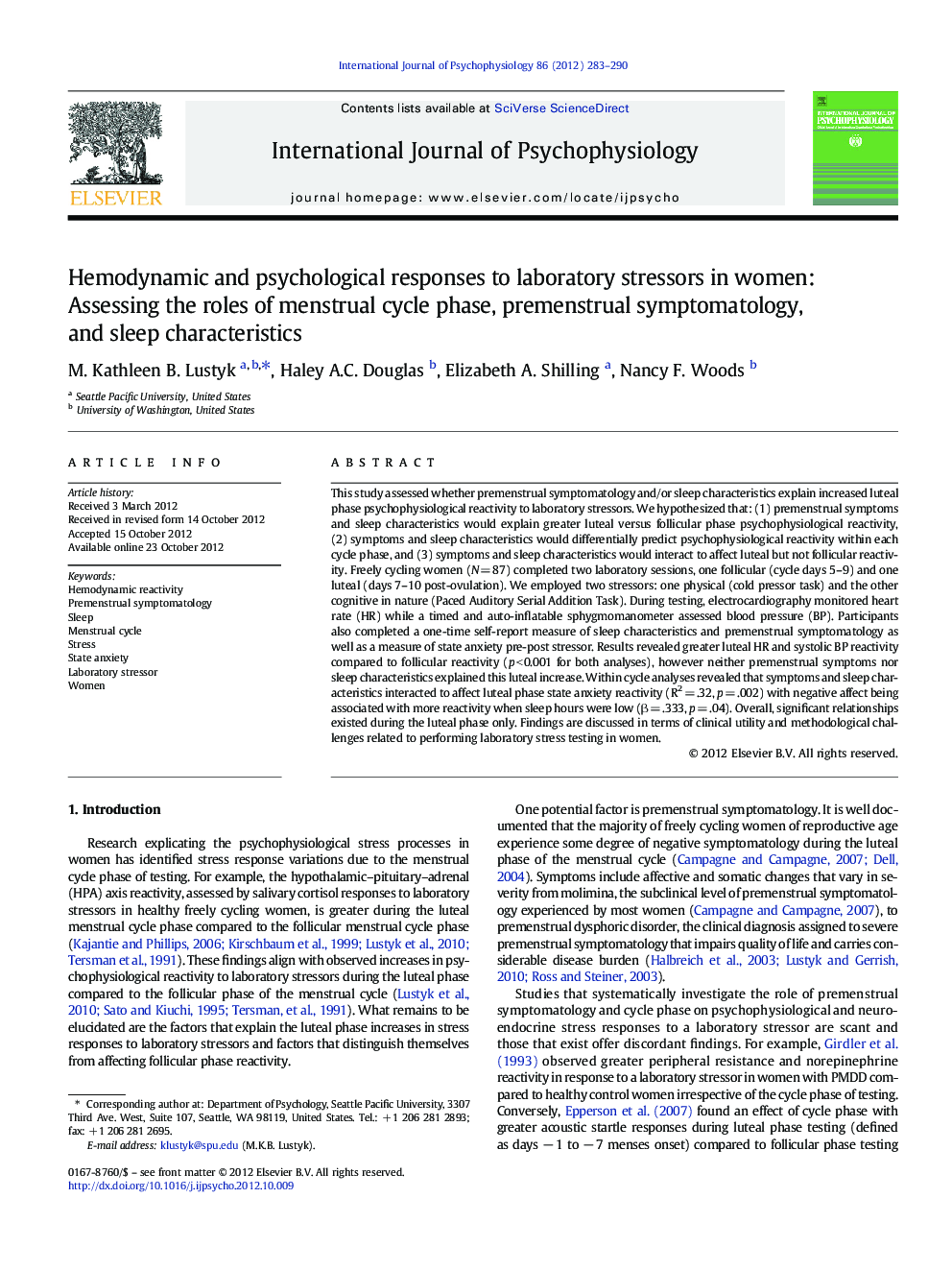| کد مقاله | کد نشریه | سال انتشار | مقاله انگلیسی | نسخه تمام متن |
|---|---|---|---|---|
| 930131 | 1474436 | 2012 | 8 صفحه PDF | دانلود رایگان |

This study assessed whether premenstrual symptomatology and/or sleep characteristics explain increased luteal phase psychophysiological reactivity to laboratory stressors. We hypothesized that: (1) premenstrual symptoms and sleep characteristics would explain greater luteal versus follicular phase psychophysiological reactivity, (2) symptoms and sleep characteristics would differentially predict psychophysiological reactivity within each cycle phase, and (3) symptoms and sleep characteristics would interact to affect luteal but not follicular reactivity. Freely cycling women (N = 87) completed two laboratory sessions, one follicular (cycle days 5–9) and one luteal (days 7–10 post-ovulation). We employed two stressors: one physical (cold pressor task) and the other cognitive in nature (Paced Auditory Serial Addition Task). During testing, electrocardiography monitored heart rate (HR) while a timed and auto-inflatable sphygmomanometer assessed blood pressure (BP). Participants also completed a one-time self-report measure of sleep characteristics and premenstrual symptomatology as well as a measure of state anxiety pre-post stressor. Results revealed greater luteal HR and systolic BP reactivity compared to follicular reactivity (p < 0.001 for both analyses), however neither premenstrual symptoms nor sleep characteristics explained this luteal increase. Within cycle analyses revealed that symptoms and sleep characteristics interacted to affect luteal phase state anxiety reactivity (R2 = .32, p = .002) with negative affect being associated with more reactivity when sleep hours were low (β = .333, p = .04). Overall, significant relationships existed during the luteal phase only. Findings are discussed in terms of clinical utility and methodological challenges related to performing laboratory stress testing in women.
► Hemodynamic responses to stress were greater during the luteal phase.
► Premenstrual symptoms and sleep explained luteal phase stress responses only.
► Low sleep hours augmented premenstrual symptom effects on stressor-induced anxiety.
Journal: International Journal of Psychophysiology - Volume 86, Issue 3, December 2012, Pages 283–290